-
Posts
4,608 -
Joined
-
Last visited
Content Type
Profiles
Forums
Store
Help Articles
Posts posted by dcarch
-
-
"---What am I missing? "
An open mind? (just kidding
 )
)A sous vide cooker is an appliance, just like an oven, a grill, a toaster, a microwave----. It does not guarantee the food will taste good.
It cooks meat with a different texture. Whether you like it or not is a personal preference.
Sous vide cooked brisket has nothing to do with stewed or braised brisket. Which one tastes better, apples or oranges?
Besides, "high tech" cooking provides a lot of visual drama, theatrics, in addition to unique flavors.
dcarch
-
I think it is a crime to eat yogurt with tofu.
dcarch

-
It is not easy for gas to stay on at low fire settings without having the flames going out.
It is not easy for electric ovens to stay very low. Most heating elements either go full on or full off. The thermostat will cycle on-off too often.
dcarch
-
Degrees F or C?
Put it inside a covered Dutch oven with liquid, but not submerged in the liquid.
that will give you 100% relative humidity.
But if you are talking about degrees C, you will be steaming the meat in only 100 degrees C (boiling temperature of water).
dcarch
-
I find it interesting that nutrition is such a big concern for many people.
We are (in USA) so overwhelmingly over-nurished. Everything is vitamine fortified with 100% MDR.
I think as long as your main diet is not junk food, there should never be any concerned that you will be deprived with essentials if you decide to peel some vegetables.
dcarch
-
"---Immersion heaters (SVP, FMM or simple bucket heater) --"
Some high wattage heaters can wear out your mechanical relay contacts.
Wire a high wattage diode in series with the heater can cut the wattage in half.
dcarch
-
It would not be difficult to electrically heat up the wires. I would think that could be great for some kind of cutting.
That's what they use to cut Styroform.
dcarch
-
I am another lucky one.
I hope people don't start cooking cantalopes.
dcarch
-
I don't know if that peels all the cloves big and small ones. He never showed the end result.
I don't know if that peels all kinds of garlics, fresh ones and well cured ones.
I have to give that a try.
My method is even simpler, I buy the ones already peeled. LOL!
Thanks for the interesting link.
dcarch
-
One word:
supercalifragilisticexpialidelecioussrumptiousfabulous!!!
dcarch
-
Steam can get to extreme high temperatures under pressure.
There is a much better way to conduct heat without going to very high pressure, that is using the principle of "heat pipe" design.
Heat pipe technology is used a lot in geothermal applications to extract and conduct heat. It is also used inside your laptop to remove heat generated by the CPU.
dcarch
-
I think it is free one hour if you buy more than $30.00
Check out picture #7, food court, lobster, fried rice and salad, all for $11.00
dcarch
-
I was invited to the Grand opening. Here are some pictures of New World Mall. Not in logical order.
Incredible swimming fresh fish in tanks. Razor claims in Eataly $9.00 a lb, NWM $4.50 a lb.
Lot's of interesting fruits and vegies.
Ducks, freerange chickens, quails, rabbits, frogs, turtles -----
Huge food court
Endless isles
Parking in basement
dcarch
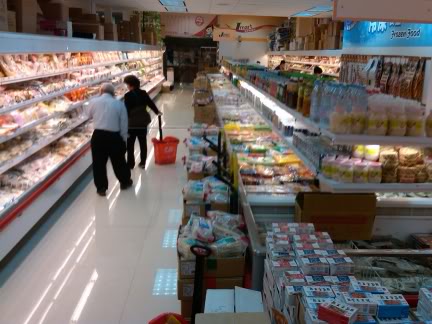
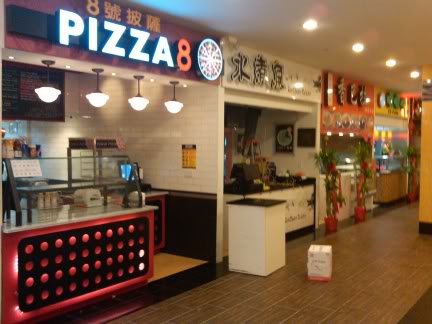

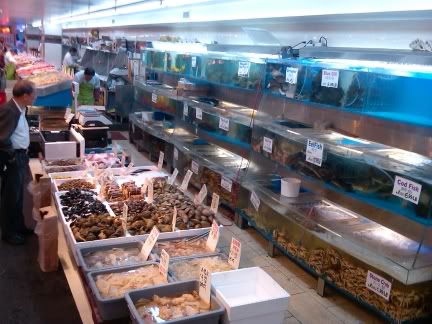
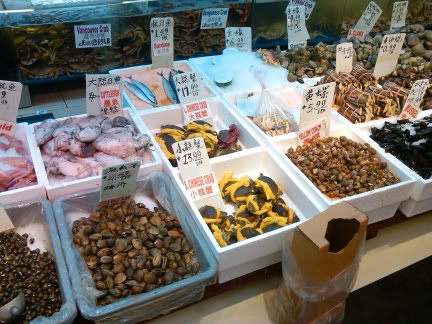
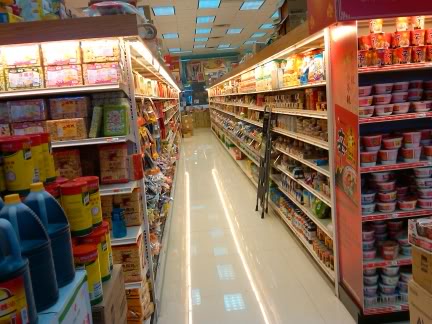
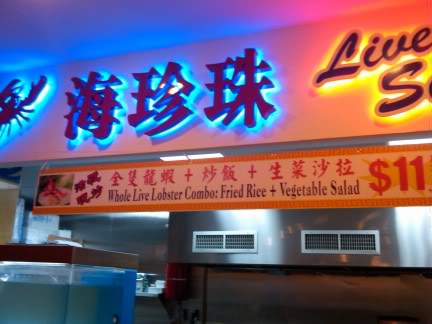
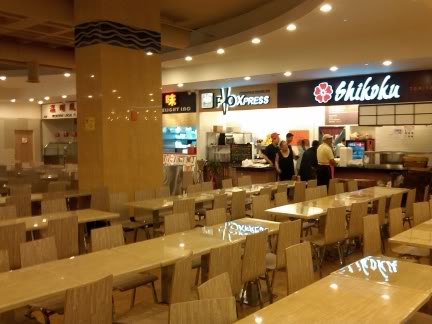






-
I wonder if it would be possible to have someone fabricate a "steam plancha" for stovetop use?
For those of you just tuning in, the way these work is that there is a sealed chamber below the cooking surface that is half-filled with water. The water is (super) heated and the steam is what heats the cooking surface from below. What makes this especially good is that when you put something on the plancha and thermal energy is transferred into the food, it creates a localized "cold spot" on the plancha. Underneath, in the chamber, there is increased condensation of water vapor onto the localized cold spot, which transfers greater amounts of thermal energy right to the exact spot where it is needed. The end result is that the temperature of the plancha surface is incredibly even and doesn't get lowered underneath the food items placed on the plancha.
I'm thinking it ought to be possible to create a hollow rectangle out of relatively thick aluminum (or whatever) that is welded closed with some water inside. Needless to say, you would want to massively over-engineer the thing so it couldn't possibly explode from built-up pressure.
Just curious as to what pressure you think would be generate? Is this something, like a flat top pressure cooker, let say 15 PSI. Could achieve?
Oh no, you would want to go much higher than that. Water at 15 PSI over atmospheric is only getting up to around 250F. You'd want to get a griddle up to, say, 350f to 400F. You're talking about maybe 200 PSI over atmospheric.
It will be very difficult.
Assuming a 2' x 3' cook top, with 30 psi pressure, it comes to 25,920 lbs of pressure. You may need 2 inch thick metal top and bottom to prevent bulging.
dcarch
-
I was invited to the grand opening a little while ago.
Just for reference:
Eatly - 50,000 sq. ft.
New World Mall - 200,000 sq. ft.
I will post some pictures later.
dcarch
-
If mixing is the purpose, I am wondering if an ultrasonic machine can do a better job.
An ultrasonic machine can even mix oil and water.
dcarch
-
I use mine regularly for Naan and Napolitan Pizzas.
Set it on the oven floor and the temperature at the highest. The "Plancha" will reach to extreme temperature.
Paul Bacino, that stainless steel thing must weigh a ton.
dcarch


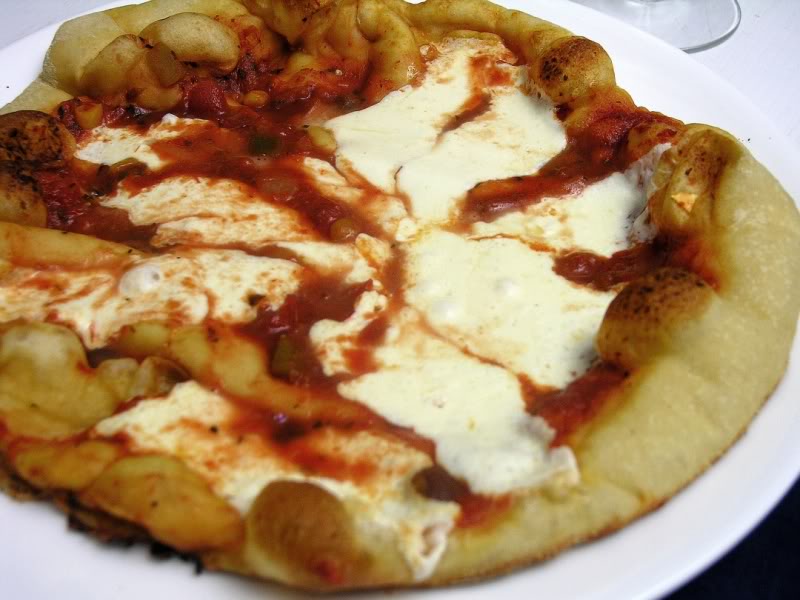
-
Chinese stores have both in a bottle and as a powder.
dcarch
-
Sous vided meats.
You can sous vide heat them up again at the same temperature.
Good as new texture-wise and flavor-wise.
dcarch
-
Are you saying they taste O.K. but not to die for?
They look so good.
dcarch
-
For all of you with square/retangular tubs:
Hanging the bag diagonally gives you more room.
dcarch
-
This cannot be absolute, universal advice.
You still have to consider the material of which the pan is constructed.
Seasoned cast iron, should not be heated to a high temp dry - it will destroy the seasoning.
If you heat tin-lined copper to just a few degrees above 450° F., you will have a puddle of tin in the pan.
I know about this from personal experience, it was an accident.
And I'm sticking to that story!

Although it did give me an excuse to buy my first stainless-lined copper skillet.

And as mentioned by others, never heat Teflon lined pans totally dry.
A "trick" to grilling steaks or chops in a cast iron skillet so as to not lose the seasoning, is to heat the skillet with water, about 1/2 to 1 inch deep.
When the water boils away completely, toss in some salt and pepper and drop in the steak.
I don't know who originated this process but I saw it done many times at The Green Shack in Las Vegas, my ex knew the owners and every time we were in town we had at least one meal there (during the 1960s, early '70s). They used a lot of cast iron skillets, both for grilling and for frying chicken, etc.
I agree with all is said.
Best to get an inexpensive IR remote thermometer, solves all problems.
dcarch
-
"---It's worth checking with the airline. Most have their policies available on-line. United's says: ---"
Alcohol fume is explosive.
dcarch
-
Tempered glass is extremely durable, and unlikely to self-destruct.
All modern high-rise building curtain walls are clad in tempered glass. Trillions and trillions of acres of glass, subjected to heat, cold, wind ----. You seldom hear about glass shattering in a building.
Glass, being technically a liquid, heating in an oven can eventually de-temper or create uneven internal stresses.
dcarch



Rust-prevention for burner grates
in Kitchen Consumer
Posted
If the grates are left out doors, in the night time the temperature drops and the grates get very cold. During the day moisture will condense on the cold grate and cause them to rust.
Try keeping the grates in plastic trash bags.
dcarch